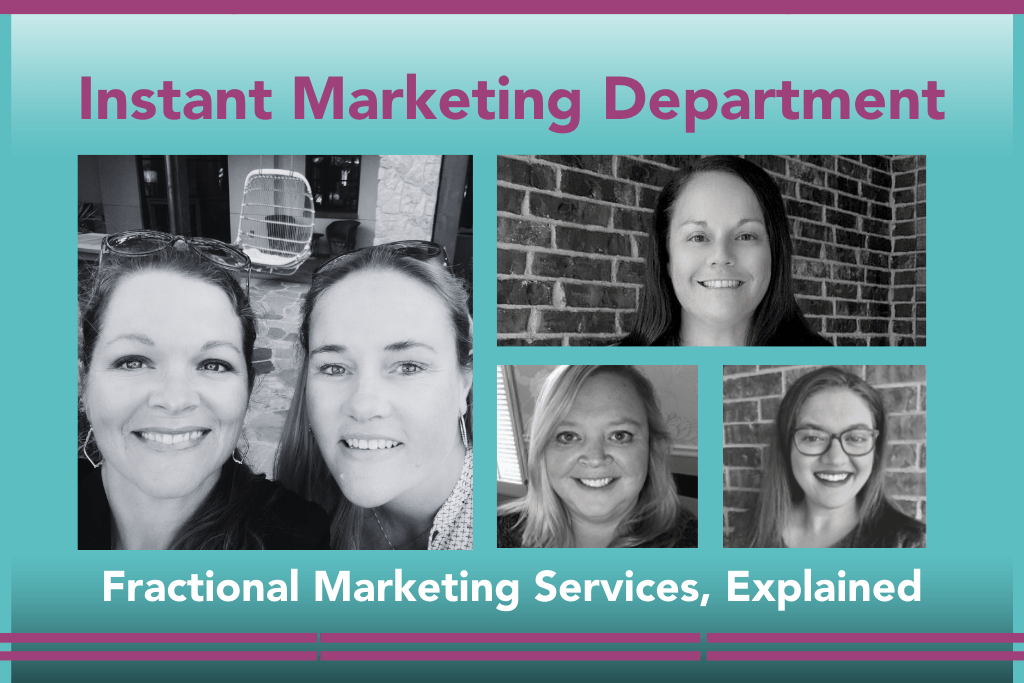We’ve touched on how advertising and marketing firms increase return on investment (ROI), but we’ve never delved into how agencies measure success and convey those results to clients. In the current economy and with some unsavory characters out there claiming to get results, but never offering proof, it’s time we addressed the elephant in the room.
Not all marketing firms measure and show ROI, because they don’t know how. We said what we said.
Why are metrics important?
First of all, if you’re not receiving regular reports from your marketing agency about where your investment is going and what it’s doing for you, that’s a red flag.
Any great marketing firm should be shouting the results they’re getting from the rooftops! Digital marketing agencies, especially, work within a competitive and ever-changing marketplace. Getting traction for your company online is more difficult than ever, so your agency should want to explain things in detail so you truly understand the value they’re providing.
Cowtown Creative does that, by the way. We love getting and showing our clients results! Numbers of affirmation are our love language.
We can’t speak to how other agencies set up their key performance indicators (KPIs), the metrics by which they measure how well your tactics are performing. The way we do it involves a process that, we’re finding, is pretty unique.
Setting up marketing KPIs and measuring ROI
All this alphabet soup can be easily broken down into a process (for us) that seems pretty intuitive:
- We work with clients to determine what tactics work best/will work best to bring in revenue.
- We ask the clients to set revenue goals we can track against leads and conversions.
- We set up marketing tactics to meet those goals.
- We track tactical performance usings lots of cool tools and reports that we explain.
- We adjust marketing tactics so we’re doing more of the things that get goal-focused results.
Here’s a fictitious example of our goal-setting process
Imagine you’re a construction company that primarily works as a subcontractor and wants to find more general contractors to work with. You’ve always gotten work from word-of-mouth referrals, but they’re generally only GCs for medical clinics, and you’d like to get more work in more industries.
Questions we start with:
- What are you known for?
- What do you do better than anyone else?
- How do you tell people that?
- What are they saying about you when you get referrals?
- What do you want people to say about you?
Once we establish a reputation and credibility baseline and know what we’re working with, we’ll ask you to set a SMART business goal. Let’s say your goal is to begin work with two new commercial GCs in the next quarter in Tarrant County.
Cool. We can work with that.
Next round of questions:
- What marketing have you tried before?
- What worked and what didn’t?
- What’s your marketing budget?
This is the part where the magic happens. We can’t tell everything we know. What we can tell you is that we take client-set KPIs and measure marketing analytics against those benchmarks to determine ROI. The rest of the first few client conversations center on explaining our target audience research, developing and explaining our strategy and how we’ll measure success.
A note about marketing firms and ROI
Any agency is going to have a tough time showing hard-core ROI because marketing, by its nature, is evolutionary. Sales funnels are different for every company and target audience, and touchpoints within the customer journey don’t always get the credit when prospects finally convert.
TL;DR: no one really just walks in off the street, people. They see and hear your company name and associate it with good things. It takes 7-9 encounters with your brand through different channels before a prospective customer will consider doing business with you. That’s why marketing ROI can be elusive; it does all the background work and doesn’t get the credit.
Marketers are like the O-line of business: we line up in a strategic formation, clear a path and make sure your sales team gets the ball (lead), and then watch them get the TD. We’re the muscle that makes it happen, but we’ll also lift you up on our shoulders and parade you around when you seal the deal. It’s a team effort!
We’re freaks in the (spread)sheets
People tend to think that marketers have creative minds and only want to focus on design and big ideas, and while that’s partly true, we probably have more of a split personality that isn’t officially diagnosed.

We’re secretly number nerds.
Let us regale you of the many times we’ve geeked out over Google Analytics reports showing a 10 percent decrease in website bounce rate over a month after we’ve cleaned up a website and turned off bad Google ads the client set up.
We will absolutely get on our soapboxes about the importance of SEO when it comes to delivering qualified, converting leads to your website forms.
We’ll ask pointed questions about the lead tracking spreadsheets you’re using and (squee!) CRM automations we can set up for lead nurturing.
Give us a good pivot table and we’ll geek out for a few hours creating new formulas to track cost per click, cost per lead, cost per conversion, and – TA DA! – ROI for your marketing budget.
How marketing firms deliver ROI reporting
This is an important point, because no one who runs a business has the time or energy to put into wading through pivot tables and logging into 4-10 different dashboards to look at all the metrics that go into determining marketing ROI.
SEO and digital advertising firms may send over table screenshots from a Google Ads dashboard that basically show what you spent and how many clicks you got, but what does that actually tell you? If the people clicking on PPC ads were following a keyword search that had nothing to do with your company, then immediately left your website once they figure that out, those ads are doing more harm than good. Your site’s credibility is going to suffer, and eventually won’t show up in people’s searches because of poor keyword management.
That’s just one example of the stuff that drives us nuts about some agencies. We digress…
What you need, and frankly deserve, is one consolidated report that gives you a big picture of what’s happening with your brand. What we deliver is a customized PDF that tracks every tactic we’re touching for your brand. If you’re the construction company that has a local B2B organic and paid marketing strategy, your report might include (among other things):
- Website performance: Google Analytics traffic, bounce rate, top sources, demographics, and conversions
- Social media metrics: Profile page followers, top posts, engagement rates, click-through rates (reflected in website performance sources and conversions)
- Ads reporting: Top-performing headlines, keywords, and images; negative keywords reporting and a summary of ads and keyword adjustments based on website performance and conversions
See? It’s all related. But wait, there’s more!
Here’s the thing about deciphering marketing metrics and figuring out some sort of ROI: it’s all about what’s feeding your qualified leads pipeline. That’s why our team sends the reports, then follows up with a summary of what’s working, what we’re adjusting, and why. Plus, our clients always know they can ask us what the heck something means, in context.
Still, the best O-line in the NFL can’t do all the work by themselves.
BONUS: 4 ways you can increase your marketing firm’s effectiveness
Number 1: Don’t hire it out and forget about it. It takes a team, remember?
Great marketing doesn’t happen in a magical ROI vacuum. On digital platforms, marketing efforts require client and employee interaction.
That’s why we send our clients helpful tips in a monthly newsletter, plus special tips just for their team so they can help support what we’re doing.
We’ll get set in our 3-point stance and bulldoze the way for your RBs to make the touchdown, but there’s still work to do between getting set to reaching the end zone. Let’s do it together.
Number 2: Be real about your goals.
You’re the resident expert on your business: its past, its current challenges, and your vision for its future. What we do is help you make your vision a reality by addressing any challenges and plowing down the opposition. (Not really, but we have to carry the football analogy through a bit more. Bear with us.) What you do is give us some realistic benchmarks and keep us updated on how we’re doing from your end.
Number 3: Track your leads and conversions.
If we’re sending 700 new visitors a month to your website and getting you 245 new form fill conversions, that’s the end of what we see happening. Once leads fill out those forms, the ball is in the hands of your closers. (That’s the lateral pass, if you will.) Then, your skill players need to step up and track what’s happening so we’re all continuing to move toward the same goal line. If we don’t know that leads from a specific pipeline are ready to do business, while another set of leads is fizzling out before the sale, we can’t adjust to put more effort and budget into getting you more qualified leads.
Number 4: Ask all the questions, and keep us in the loop.
Communication between clients and marketing teams can’t be a one-way street. We’re all about target market personas and finding out what makes people want to do the things we want them to do. We’re focused on getting you results based on the goals you shared with us.
If your business has changed, you have questions about metrics and reports, or you’ve developed new goals, we want to hear from you! While we’re over here creating bomb-diggity marketing assets and gaining brand traction, our ESP skills are severely lacking.
If you call an audible and change the play, we’ll adjust. That’s what teamwork is all about.
In the meantime, just know that we’re breaking down all the numbers and spreadsheets and dashboard results so you know, without a doubt, where your money is going and what it’s doing to build your business. Bring us your goals, your brand, your vision for the future – we’ll show you how we’re getting it done and moving toward that next first down.



